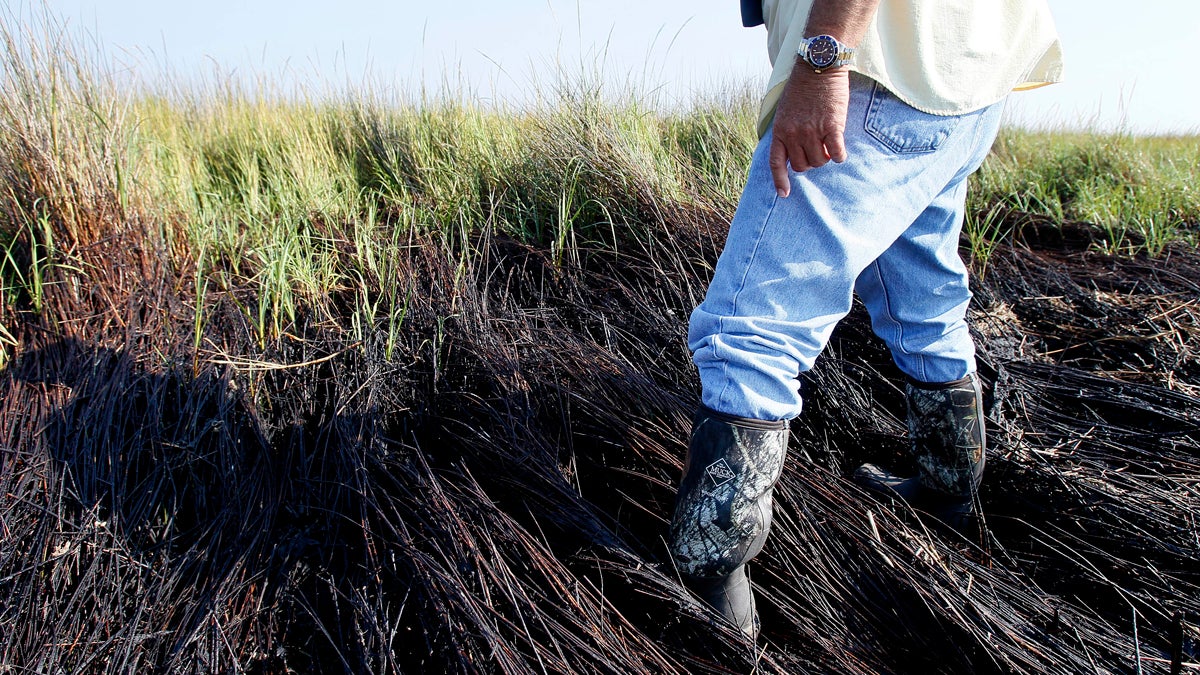Drexel scientists develop new material for sopping up oil spills

In this Oct. 14, 2010 picture, Plaquemines Parish coastal zone director P.J. Hahn walks through oiled marsh grass in Bay Jimmy near the Louisiana coast. Six months after the rig explosion that led to the largest offshore oil spill in U.S. history, damage to the Gulf of Mexico can be measured more in increments than extinctions, say scientists polled by The Associated Press. There is no comprehensive calculation for how much marshland was oiled, but estimates range from less than a square mile to just a handful of square miles (Patrick Semansky/AP Photo)
The next time there’s a massive oil spill like 2010’s Deepwater Horizon, which released nearly five million gallons of oil into the Gulf of Mexico, cleanup crews might be using a new material designed in part by engineers at Drexel University.
The material, a single layer of boron and nitrogen atoms known as boron nitride nanosheet, is super absorbent, capable of soaking up more than 30 times its weight in oil.
“Boron nitride is probably the next most popular material after graphene,” said Yury Gogotsi, head of Drexel’s nanomaterial institute, referring to the two-dimensional form of carbon often touted as the material of the future. “But it’s very difficult to make this single very, very thin sheet.”
Together with colleagues at Deakin University in Australia, the Drexel team figured out a better way to make those atom-thick flakes. The layers can then be put into a blanket-like foam that sponges up oil in case of a spill.
Because boron nitride isn’t sticky, the foam can even be re-used after cleaning, said Gogotsi. And there’s the added bonus of the compound’s natural flame resistance.
“People currently use either polymers or carbon,” said Gogotsi of other oil removal agents, “but both burn very easily.”
The findings were published in the journal Nature Communications.
Like graphene, the atoms in boron nitride nanosheet are arranged in a hexagonal pattern, giving the material the nickname “white graphene” despite the absence of any carbon.
In addition to being used at sea, the nanosheets also show promise as insulators in electronics and as desalination filters for water, said Gogotsi. Large-scale production hasn’t started yet, he said, although he’s already heard from several interested companies.
WHYY is your source for fact-based, in-depth journalism and information. As a nonprofit organization, we rely on financial support from readers like you. Please give today.

